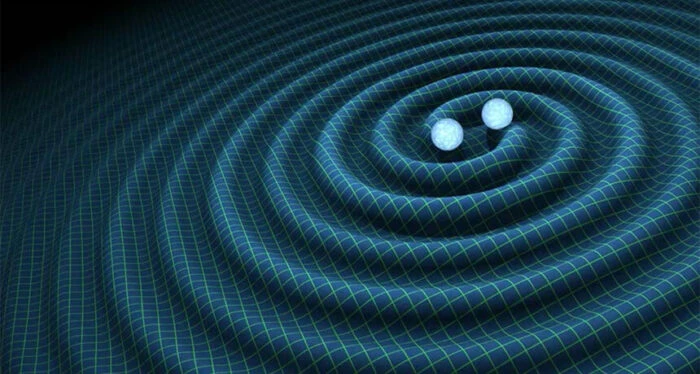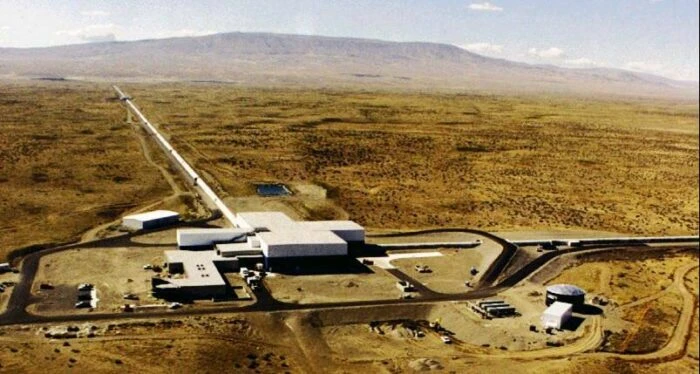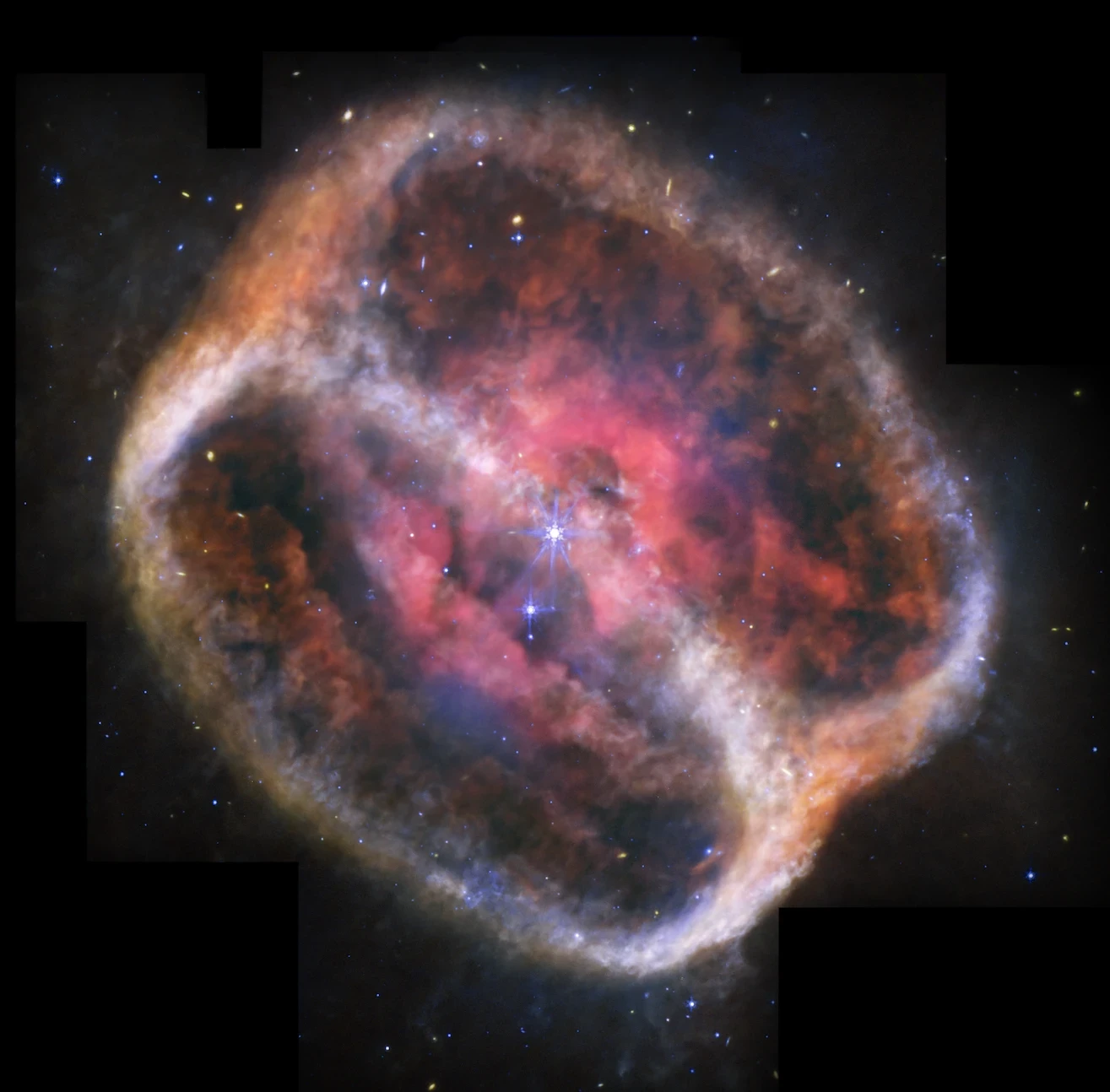In what is a historic development for physics and one of the biggest breakthroughs since the discovery of the Higgs boson, the two Laser-Interferometer Gravitational-waves Observatories (LIGO) spaced over 3,000km apart simultaneously detected the compression and rarefaction of space caused by gravitational waves emanating from a merger of two black holes 1.3 billion years ago.
An introduction to gravitational waves
Einstein's successful general theory of relativity (GR) made a number of predictions—Mercury's precessing orbit, gravitational lensing, the Shapiro effect, frame dragging, Einstein–Rosen bridges, gravitational waves, CTCs and (closer to home) GPS systems among others—and every single attempt to observationally prove GR has been successful till date.

GR suggested that space-time is like a thee-dimensional fabric that exists everywhere. (Arguably, this is not the most elegant explanation, but there is only so much one can do without mathematical aid.) And when massive objects accelerate through space, often in their orbits, they cause waves compressing and stretching space-time to emanate from their position, spreading outwards. The cause itself is not unlike ripples in a pond, but where the water appears to go up and down in water waves , gravitational waves stretch and compress space itself. Think of this as you and this screen periodically moving towards and away from each other — it could even be happening right now, albeit at unimaginably tiny scales.
The reason we talk of such massive objects and their motions is that although we too cause gravitational waves, as does an ant or anything massive for that matter, the waves caused are not substantial enough. In fact, as we will see, the waves cause by the two black holes too grow extremely weak by the time they reach the earth.

Lastly, what do these gravitational waves look like? They are transverse in nature — the waving is taking place perpendicular to the direction of travel — similar to electromagnetic waves, with one major difference: electromagnetic waves are dipolar in nature whereas gravitational waves have a quadrupole nature. This means, if the waves are travelling in the z-direction, they alter their surroundings not only on the x-y plane along one direction (like a dipole), but along two perpendicular directions (like a quadrupole). (See the animation above.)
The point here is that energy is being radiated away from the object in question by gravitational waves. And for us to realistically expect to be able to see these waves, the objects causing them must be extremely large and moving pretty fast. There are several theoretical models that explain what might cause such waves at detectable scales. Two such models we will talk about are, firstly, binary pulsars and, secondly, black holes.
‘Einstein would be very happy, I think,’ said Gabriela González of LIGO/Louisiana State University.
Nobel 1993: first detection of gravitational waves
As it turns out, gravitational waves have been detected before, and even been awarded the Nobel prize. If you notice the two decades old press release of the Royal Swedish Academy of Sciences, the reasons for the prize are somewhat carefully worded: ‘...a discovery that has opened up new possibilities for the study of gravitation.’ This is because although the existence of gravitational waves had technically been shown by the 1993 prizewinners, Hulse and Taylor, their inference was entirely indirect. They never measured or observed any gravitational waves, just the effects of one.
A couple of pulsars in mutual orbit—where they orbit each other , effectively around a common centre of mass—would lose energy due to this acceleration, radiated away through gravitational waves in much the same was as charges emit electromagnetic waves. In other words, proving that such pulsars do lose energy would effectively be indicating at the presence of gravitational waves. Hulse and Taylor realised that if they measured the pulses of these neutron stars and found the pulses to lose frequency, they could show the expected energy loss.
The challenge was, of course, to find pulsars whose jets were targeted directly at the earth, so that they could, first of all, be detected and next their orbital frequencies be measured. Put in a simple manner, this reduction in orbital frequency, seen through the radio wave jets oozing out of the pulsars' poles, would show that acceleration — as demanded by GR — does cause energy loss that is radiated away as gravitational waves.
How Advanced LIGO works
The next step, quite naturally, is to actually observe and measure gravitational waves—directly—and this took physicists a century after Einstein put his ideas on paper. LIGO is basically a large interferometer with a beam splitter and mirrors 4km apart. Both mirrors are placed precisely so that a beam that is split should strike the mirrors and make their way back in phase. The splitting is done using a half-silvered mirror that reflects part of the light and refracts the rest. In other words, LIGO is a really large Michelson's Interferometer setup.

If the two beams traveling down the two tunnels to their respective mirrors 4km away are reflected and return in-phase, there is no interference pattern observed. In turn this means no voltage peak is observed by the detectors, just a regular dot. The waves, if they travel different distances — one 4km, the other less — the returning waves are no longer in-phase and interfere differently, which gives rise to a different voltage peak. The takeaway here is simple: so long as the tunnel lengths remain a precise 4km each, the waves interact in one way; and when the tunnel lengths are no longer equal, they interact differently.
LIGO is looking for such changes in tunnel length caused by gravitational waves as they stretch and compress the tunnels.
LIGO detects gravitational waves
Two black holes merged about 1.3 billion years ago, sending off gravitational waves carrying energy worth \(3M_{\odot}\), or three times the mass of the sun. All of this energy — massive as it was — would have died down by the time it reached. And gravitational waves being inherently weak does not help much. Yet, LIGO had recently been upgraded and prepared to detect much smaller changes in tunnel length than before, and about five days after it was turned back on, it detected this signal. This brings one of two questions to mind: was the LIGO team really, really lucky? Or are these gravitational waves extremely common?
The change in length was of the order of \(10^{-18}m\), or a millionth of a millionth of a millionth of a metre. For comparison, an atom is, on average, a thousand times bigger. However, the next question naturally is, could this have been a local disturbance? Unlikely, because most noise levels are monitored continuously, and high frequency disturbances are taken care of using heavy weights. But, most importantly, both LIGO detectors, more than 3,000km apart detected the exact same signal making it unquestionably not a local phenomenon.
What next?
The physicists onboard LIGO claim that this detection would open up new avenues in astronomy. (This was mostly sparked because the voltage chirp was converted to a beautiful sound clip which allowed us to hear these waves like we would hear sound waves.)
The LIGO detection is ‘by no means a confirmation of General Relativity’ says Prof Jayant Murthy of the Indian Institute of Astrophysics. He goes on to point out that it was already reasonably confirmed and we detected exactly what we expected to detect, which is good news. Although the introduction of newer frequencies has often brought with it the discovery of new celestial objects, this is unlikely to happen anymore.
The fact that black holes cannot be seen means that the LIGO observation is, currently, also the most direct observation of black holes—which can be seen if, say, they have an accretion disk. Most black holes have only been observed through their nearby stars which were in some way (usually by orbit) affected by the presence of a black hole: mostly indirect observations. This has prompted many physicists to argue that a lot more could possibly be discovered in the same manner—only time will tell. But what we do know now is that a hundred years after Einstein, we have new, solid evidence for GR. And the universe seems to keep getting stranger by the minute.
